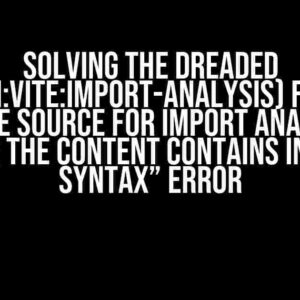Are you tired of manually creating complex XML structures? Do you want to simplify your coding process and make it more efficient? Look no further! In this comprehensive guide, we’ll dive into the world of XML and explore the magic of creating XML sub-elements using XmlElement annotation.
What is XmlElement Annotation?
XmlElement annotation is a powerful tool used in Java-based programming languages to generate XML documents. It allows developers to create custom XML elements and attributes, making it easier to work with complex XML structures. By using XmlElement annotation, you can define the structure of your XML document and generate it automatically, saving you time and effort.
Why Use XmlElement Annotation?
So, why should you use XmlElement annotation? Here are just a few reasons:
- **Simplified coding**: XmlElement annotation simplifies the process of creating complex XML structures, making it easier to focus on the logic of your code.
- **Improved readability**: By using annotations, you can make your code more readable and understandable, reducing the risk of errors and misunderstandings.
- **Flexibility**: XmlElement annotation provides flexibility in terms of customizing your XML elements and attributes, allowing you to tailor your XML documents to your specific needs.
Creating XML Sub-Elements using XmlElement Annotation
Now that we’ve covered the basics, let’s dive into the step-by-step process of creating XML sub-elements using XmlElement annotation.
Step 1: Define Your XML Structure
The first step in creating XML sub-elements is to define the structure of your XML document. This involves identifying the root element, sub-elements, and attributes that will make up your XML document.
<root>
<sub-element-1>
<attribute-1>value</attribute-1>
<sub-sub-element-1>value</sub-sub-element-1>
</sub-element-1>
<sub-element-2>
<attribute-2>value</attribute-2>
<sub-sub-element-2>value</sub-sub-element-2>
</sub-element-2>
</root>
Step 2: Create Your Java Class
Next, create a Java class that will represent your XML document. This class will contain the necessary annotations to define the structure of your XML document.
import javax.xml.bind.annotation.XmlElement;
import javax.xml.bind.annotation.XmlRootElement;
@XmlRootElement(name = "root")
public class RootElement {
@XmlElement(name = "sub-element-1")
private SubElement1 subElement1;
@XmlElement(name = "sub-element-2")
private SubElement2 subElement2;
// getters and setters
}
Step 3: Define Your Sub-Elements
In this step, you’ll create separate Java classes to represent each sub-element in your XML document. These classes will contain the necessary annotations to define the structure of each sub-element.
import javax.xml.bind.annotation.XmlElement;
public class SubElement1 {
@XmlElement(name = "attribute-1")
private String attribute1;
@XmlElement(name = "sub-sub-element-1")
private String subSubElement1;
// getters and setters
}
public class SubElement2 {
@XmlElement(name = "attribute-2")
private String attribute2;
@XmlElement(name = "sub-sub-element-2")
private String subSubElement2;
// getters and setters
}
Step 4: Generate Your XML Document
Finally, use a JAXB (Java Architecture for XML Binding) marshaller to generate your XML document from your Java objects.
import javax.xml.bind.JAXBContext;
import javax.xml.bind.Marshaller;
public class XmlGenerator {
public static void main(String[] args) throws Exception {
JAXBContext jaxbContext = JAXBContext.newInstance(RootElement.class);
Marshaller marshaller = jaxbContext.createMarshaller();
RootElement rootElement = new RootElement();
// set the properties of your root element
marshaller.marshal(rootElement, System.out);
}
}
Common XmlElement Annotation Attributes
When using XmlElement annotation, you can customize your XML elements and attributes by using various attributes. Here are some of the most common attributes:
| Attribute | Description |
|---|---|
| name | Specifies the name of the XML element or attribute. |
| namespace | Specifies the namespace of the XML element or attribute. |
| required | Specifies whether the XML element or attribute is required or optional. |
| defaultValue | Specifies the default value of the XML element or attribute. |
Troubleshooting Common Issues
When working with XmlElement annotation, you may encounter some common issues. Here are some troubleshooting tips to help you overcome these issues:
Issue 1: Missing XmlElement Annotation
Solution: Make sure you’ve annotated your Java class and its properties with the necessary XmlElement annotations.
Issue 2: Incorrect XML Structure
Solution: Check your XML structure and ensure it matches the annotations in your Java class. Verify that the element and attribute names, as well as their namespace, are correct.
Issue 3: JAXB Marshaller Errors
Solution: Check your JAXB marshaller configuration and ensure that it’s correctly set up to handle your XML document. Verify that the marshaller is correctly configured to handle the namespace and element names.
Conclusion
In this comprehensive guide, we’ve explored the power of XmlElement annotation in creating XML sub-elements. By following the step-by-step instructions and troubleshooting tips, you’ll be well on your way to generating complex XML documents with ease. Remember to keep your XML structure organized, and don’t hesitate to experiment with different XmlElement annotation attributes to customize your XML elements and attributes.
With XmlElement annotation, you can simplify your coding process, improve readability, and increase flexibility in working with complex XML structures. So, get creative and start generating your XML documents today!
Frequently Asked Questions
Q: What is the purpose of XmlElement annotation?
A: XmlElement annotation is used to define the structure of an XML element or attribute in a Java class.
Q: How do I generate an XML document using XmlElement annotation?
A: You can generate an XML document using a JAXB marshaller, which converts your Java objects into an XML document.
Q: What are the common attributes of XmlElement annotation?
A: The common attributes of XmlElement annotation include name, namespace, required, and defaultValue.
Q: How do I troubleshoot common issues with XmlElement annotation?
A: You can troubleshoot common issues by checking your XML structure, ensuring correct annotation, and verifying JAXB marshaller configuration.
By mastering XmlElement annotation, you’ll be able to create complex XML documents with ease, making your coding process more efficient and enjoyable. Happy coding!
Frequently Asked Questions
Get ready to unleash the power of XML elements and create sub-elements like a pro!
What is the purpose of the XmlElement annotation in Java?
The XmlElement annotation in Java is used to map a JavaBean property to an XML element. It’s a crucial part of the Java Architecture for XML Binding (JAXB) that enables you to customize the marshalling and unmarshalling of XML data.
How do I create an XML sub-element using the XmlElement annotation?
To create an XML sub-element, you need to use the XmlElement annotation on a JavaBean property that returns a collection or an array. For instance, let’s say you have a class called `Book` with a property called `authors` that returns a list of `Author` objects. You would annotate the `authors` property with `@XmlElement(name = “author”)`, and JAXB would generate an XML structure like `
Can I customize the XML sub-element name using the XmlElement annotation?
Absolutely! The `name` attribute of the XmlElement annotation allows you to specify a custom name for the XML sub-element. For example, if you want to rename the `authors` property to `writers` in the XML output, you would use `@XmlElement(name = “writer”)`. This way, you can decouple your Java property names from the XML element names and have more control over the output.
What happens if I have a nested XML structure and I want to create a sub-element within a sub-element?
No problem! You can nest XmlElement annotations to create a hierarchical XML structure. For instance, if you have a `Book` class with an `authors` property that returns a list of `Author` objects, and each `Author` object has a `biography` property, you can use `@XmlElement(name = “author”)` on the `authors` property and `@XmlElement(name = “bio”)` on the `biography` property. This would generate an XML structure like `
Are there any limitations or caveats when using the XmlElement annotation to create XML sub-elements?
Yes, there are some limitations to keep in mind. For instance, when using XmlElement on a collection or array property, JAXB will only marshal the elements if the collection is not empty. Additionally, if you’re using XmlElement on a property that returns a JAXBElement, you might encounter issues with JAXB’s default namespace handling. Be sure to consult the JAXB documentation and test your code thoroughly to avoid any unexpected behavior.



